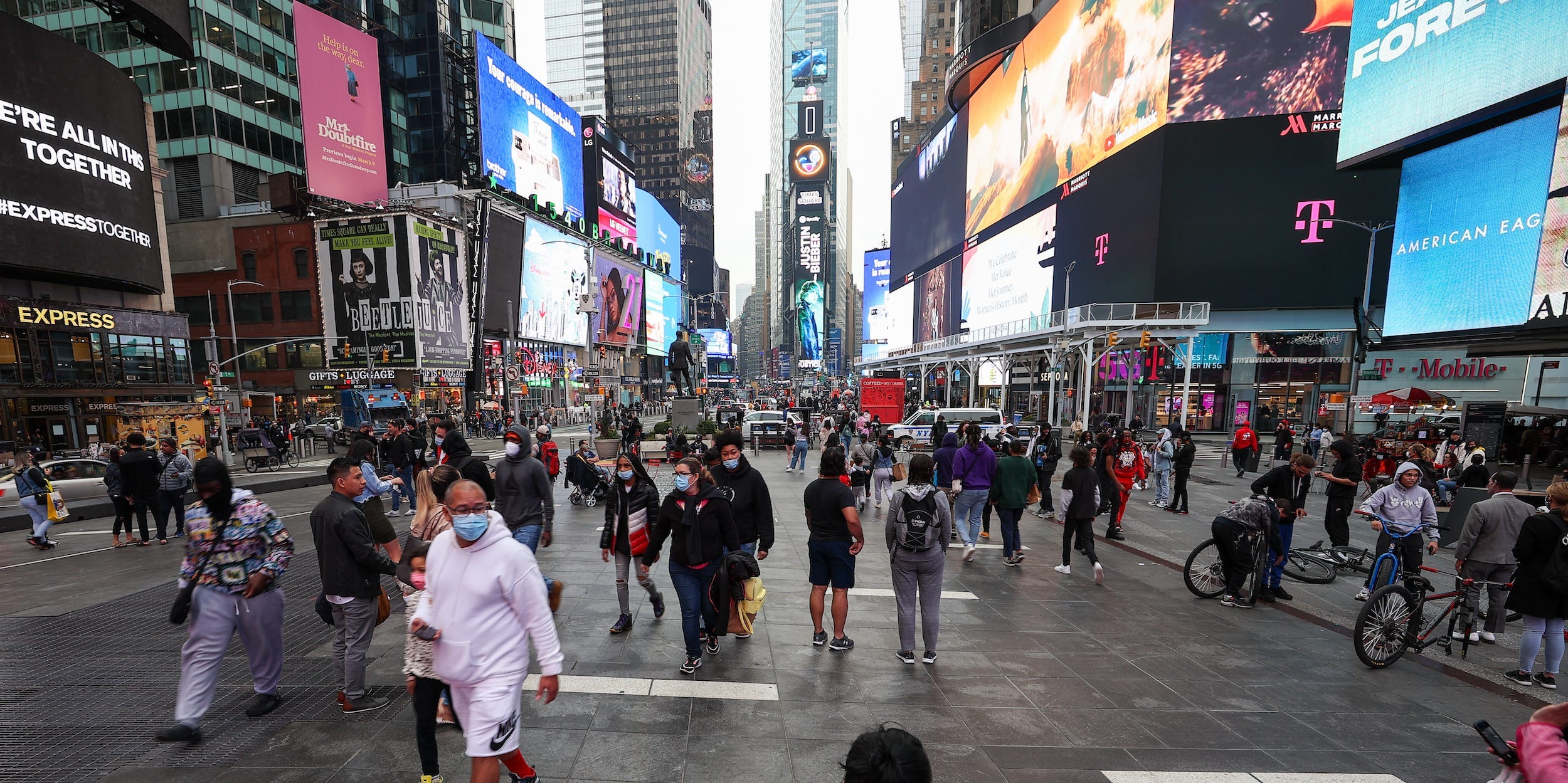
Tayfun Coskun/Anadolu Agency via Getty Images
- The blowout March jobs report caps a month of largely positive trends for the US economic recovery.
- Economists are bracing for stimulus and reopening to fuel strong growth in the months ahead.
- But millions of jobs were lost during the pandemic and the recovery hasn't yet come to all Americans.
- See more stories on Insider's business page.
America's economic recovery has been somewhat disjointed over the last several months.
When retail sales would surge, job additions would falter. Consumer sentiment would improve, but unemployment claims remained at elevated levels. And while manufacturers continued to enjoy outsize demand, restaurants and brick-and-mortar stores saw elevated COVID-19 infections eat into business.
Now, roughly one year after the pandemic began to spread across the country, those separate parts of the economy are rebounding in sync. Consumer sentiment soared to one-year highs, jobless claims stabilized near pandemic-era lows, and service-sector activity bounced back.
Perhaps most importantly, US payroll growth bested forecasts and hinted at strong job gains to come. Businesses added 916,000 payrolls in March, marking the largest single-month increase since August. Economists surveyed by Bloomberg expected an increase of just 660,000 jobs last month. The headline unemployment rate dipped to 6%, matching forecasts.
The recovery seems to have found its footing. But the climb back to pre-pandemic strength is steep. A full rebound requires several more months of extraordinary hiring and massive consumer spending. Even if payroll growth continues at the rate seen in March, Insider's Andy Kiersz calculated that it would take until January 2022 to recoup every job lost during the pandemic.
"March was definitely a bright spot. The increase of more than 900,000 jobs is definitely a promising start to the recovery," Elise Gould, senior economist at the left-leaning Economic Policy Institute, told Insider. "It's good, but let's make sure we can hold onto it."
Where the recovery goes from here
It took mere hours for Friday's hugely positive jobs report to translate into more optimistic growth forecasts. Incorporating the better-than-expected data led JPMorgan to lift its first-quarter growth forecast to 3.7% from 3.3%. The risk of recession over the next year fell to 0% from 2.5%, and the bank's projected payroll-growth average for the next 12 months roughly doubled to 477,000 per month.
The improvements are the latest in a string of outlook upgrades on Wall Street. The stimulus bill's March 11 passage prompted several firms to raise their growth estimates amid hopes that fiscal support would boost spending and, in turn, job creation. Bank of America, UBS, Morgan Stanley, and others revised their GDP estimates higher in recent weeks, with some anticipating a full GDP recovery arriving in the second quarter.
The March payrolls report only solidified economists' optimism.
"The risk is that the rate of job growth actually accelerates further given the stimulus-induced boost to spending and economic reopening," Bank of America economists led by Michelle Meyer said in a Friday note.
The team expects payroll growth to average 950,000 per month in the second quarter, which would pull the unemployment rate to 4.7% by the end of June.
With the Federal Reserve signaling it will maintain its ultra-easy policy stance and President Joe Biden pitching a $2.3 trillion plan to create millions of jobs, things are looking bright for the fledgling rebound. But the extent of the economy's journey back to a full recovery still presents a challenge.
The importance of a full recovery and then some
For starters, it's not enough just to recoup every job lost during the pandemic. Even after March's strong hiring activity, the country was still down roughly 8.4 million jobs from its early 2020 highs, according to the Bureau of Labor Statistics. But that statistic isn't the right counterfactual, EPI's Gould said.
The economy was creating roughly 200,000 jobs each month before the pandemic hit. Factor in population growth over the past year, and the number of jobs needed to get the country back on track could land closer to 11 million, she added.
Alternatively, an unofficial gauge of employment used by the Fed and Treasury Secretary Janet Yellen pegs the number of lost jobs far higher. By accounting for misclassification and workers who've dropped out of the labor force since February 2020, the "real" unemployment rate remains at an elevated 8.7%. Insider calculates that figure to translate to 14.3 million lost jobs.
The kinds of jobs being created also matter. The pandemic's economic impact slammed women, minorities, and low-income Americans the hardest, and those groups have been similarly shortchanged in the recovery. Returning to the labor market seen just before the pandemic would still place Black unemployment at 6%, roughly twice the level for whites. It's important that the recovery doesn't just bring the economy to its pre-pandemic strength, but also erases disparities that held back growth in 2019, Gould said.
The payrolls report caps a month that just might represent the economy's turnaround, but it's still critical that Americans stay vigilant, the economist added. Virus cases slowly trended higher through the last days of March, and Michigan currently sits on the brink of a new outbreak. Widespread vaccination stands to end the pandemic, but months remain until the crisis is fully in the country's rear-view mirror.
"We are not out of the woods. We don't have herd immunity," Gould said. "We've made this mistake before, in the last year, where things started opening up prematurely, and then you saw a spike in cases ... so I would be knocking on wood."
